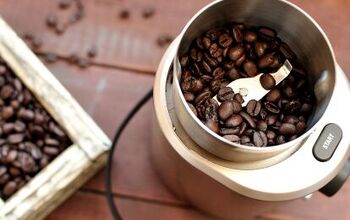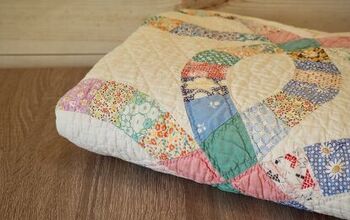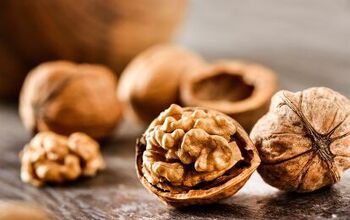Why Are Espresso Machines So Expensive? (Find Out Now!)

I’m not sure if Upgraded Home readers are aware, but I am a foodie and I also write a ton about coffee. In recent weeks, I’ve been spending heavily getting espressos and cappuccinos instead of wine. I decided to get an espresso machine until I saw the price tag. Why are espresso machines so darned expensive?!
In order for a machine to make high-quality espresso, it needs to force hot water to pass through a puck of coffee beans. Doing this requires it to funnel up an extremely high amount of pressure. The parts required are not easy to make, which is why these machines are pricey.
If you are lost on why you are having such a hard time finding a cheap espresso machine, you’re not alone. It’s important to understand what makes these such high-end luxury items.
Why Are Espresso Machines So Pricey?
There are three main reasons why an espresso machine might be out of your price range. We’re going to explain the bulk of it here:
- The basic mechanics that a traditional espresso requires are tough. High-pressure gaskets, extreme water temperatures, and safety gear are all required. Getting a machine that can do it all is not going to come cheap. Those are delicate instruments.
- Making a product that is able to perform well for years is not an easy task. Regular coffee machines break after 1 to 3 years. If you look at an espresso machine’s lifespan, it’s a bit higher. That’s quality. You pay for that.
- If you want to have a brand-name espresso maker, then you’re going to pay for the brand. A Breville will cost a lot more than a De Longhi. I’ll leave it at that.
- People who buy very high-end espresso machines also are able to repair them. Yep, all those petite parts are replaceable, and the machines are made to be fixable.
- Additional features are going to involve even more technology and more moving parts. Automatic espresso creation, milk frothers, ultra-high temperature brewers, and more will cost more too.
How Much Can An Espresso Machine Cost?
The price range for an espresso machine is going to vary greatly depending on how much you are willing to pay. Most espresso machines will start at a bare-bottom price of $50 or so. If you want to get a high-end espresso machine, it’s possible to see price tags between $500 to $5,000.
Is Buying A More Expensive Espresso Machine Worth It?
Honestly, as a coffee drinker, my vote is going to be squarely in the “YES!” column. There are several reasons why I’d suggest splurging if you can afford it. Here’s why:
- The quality of the machine is going to be higher and it’ll last longer. You do not want to have to replace your coffee gear every two years. Having a machine that is fixable means that you won’t have to replace it. You will be able to enjoy that coffee for years and years.
- Personally, I think it makes making espresso easier. No, I’m not talking about those crappy little pod coffee makers that claim they make “espresso.” I mean a real espresso. All those bells and whistles allow you to create one that is just to your making. If you’re a cappuccino fan like I am, then you already know that a good espresso maker can also make getting your cap’ on easier.
- You also get better customer service out of it. With certain brands, you can actually call the company and get it serviced for free. With some, you also might end up being able to score a delicious discount on their in-house coffee brands.
- Many of the higher-end machines can also make other drinks. A good machine can also make a cappuccino easier to enjoy than ever before. They have milk frothers and some also carry settings for hot chocolate.
How Much Should You Spend On A Good Home Espresso Machine?
Here’s something we need to make very clear: while you can get an espresso maker for $100, you really shouldn’t. Cheap espresso makers can fall apart very quickly. As someone who has bought a cruddy one before, I can tell you that they may leak. If it was like mine, it’ll spout off extremely hot steam on your hand and burn you. That’s not good.
Most decent, long-lasting espresso machines start around $300 to $500. This is considered the right range for a home espresso machine.
Should You Get A Keurig Coffee Maker Instead?
It’s often said that a Keurig (or similar “pod” coffee machine) can make do as an espresso maker. However, this is not actually the full truth. Keurig cups do not make espresso—at least, not in the real sense of the word. The coffee that you get in a K-pod will be very close to an espresso, but it is not the real thing.
Espressos are generally more robust and more flavorful. They are brewed longer, and you actually get to choose the very bean you want to have. Keurig and other brands have a smaller selection of brews, too. So if you were hoping to get a better coffee, don’t bother with Keurig.
If you want a convenient coffee machine, a Keurig is cheaper and better. If you want espresso, it’s best to buy a maker or go to a coffee shop.
Can You Make Espresso With Regular Coffee Beans?
If you go to the grocery store (or any luxury coffee shop), you might see that some coffees are labeled as regular coffee while others are labeled as espresso. Though they are often used interchangeably with regular beans, espresso beans are not quite the same as regular coffee.
The preparation is slightly different, especially when it comes to upscale roasters. Espresso bean roasting is generally going to be a darker roast. Oh, and because of how they are prepared, espresso beans are also higher in caffeine concentrations than a regular coffee.
Do Most Espresso Machines Come With Accessories?
Espresso machines generally make a point of being sold solo aside from a free tamp, especially if they are upscale. They might come with smaller tools like spoons or a mat, but that’s about it. Accessories sometimes get added as a part of a larger kit or for dual-use machines. For example, an espresso machine might come with a complimentary milk frother for cappuccinos.
What Accessories Can You Buy For An Espresso Machine?
If you want a full barista setup, then you are going to have to invest a little in your equipment. These items below will give you a good setup:
- Espresso Cups. A nice coffee with a plate is ideal. Some people prefer to buy their espresso serving utensils from the same company as the maker.
- Coffee Grinders. Some machines come with their own. Freshly ground beans tend to taste better than the pre-ground ones from the store.
- Milk Frothers. These days, a lot of espresso machines will come with their own milk frothers or steam wands. Not all do, though. As a cappuccino fan, I highly suggest this option.
- Espresso Tampers. These are the things that help press the espresso grounds into the machine. Most machines come with one, but you might want a second.
- Milk Heaters. Much like with tampers, a lot of models come with their own built-in milk heater. If you don’t have one in your espresso machine, it’s really smart to get one for yourself. Your cappuccino game will thank you.
Related Questions
Where can I get a Starbucks espresso machine?
There is no such thing as a “Starbucks” espresso machine. Starbucks does not make its own espresso machines, though they totally should. The company actually uses specialty, high-end espresso machines that have additional modifications solely for the chain. Until Starbucks actually makes their own machines for widespread sale, this is not going to happen.
What kind of espresso makers does Starbucks use for its coffee?Starbucks currently uses a very niche brand called Thermoplan AG. This Swiss coffee machine maker creates a specialty device called a Mastrena, which acts as a superautomatic espresso maker. These machines are not available for purchase outside of the Starbucks supply chain line, so, unfortunately, getting that perfect frappuccino is not going to be doable quite yet.
While Starbucks has made no announcement regarding open sale of their Mastrena brewers, the truth is that it’s a highly anticipated event. Most Starbucks fans agree that it’s not a matter of if, but when they decide to release the Mastrena for mainstream use. Here’s hoping!
How long does an espresso machine last?Unlike coffee machines, which last a measly two years at most, an espresso machine is a “long haul” investment. A low-end espresso machine is expected to last between five to seven years. High-end espresso machines can last between 10 to 18 years before they need to be replaced.
As long as you maintain your machine well, you should expect it to serve you for years to come. No wonder it’s considered to be an investment piece!
Related Guide

Ossiana Tepfenhart is an expert writer, focusing on interior design and general home tips. Writing is her life, and it's what she does best. Her interests include art and real estate investments.
More by Ossiana Tepfenhart
















![10 Most Dangerous Neighborhoods in Baltimore [Updated]](https://cdn-fastly.upgradedhome.com/media/2023/07/31/9075655/10-most-dangerous-neighborhoods-in-baltimore-updated.jpg?size=350x220)










